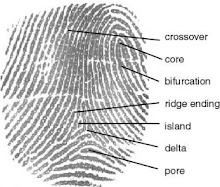Knowledge of photography is just as important as that of the alphabet. The illiterate of the future will be a person ignorant of the use of the camera as well as the pen.
-- Laszlo Moholy-Nagy.
Setting aside for the moment (but only for the moment) the issue about what it is that a camera records, visual ethnography suggests a whole range of methods for collecting data. In this context, the camera is analogous to a tape recorder. Film and video cameras are particularly well suited as data gathering technologies for small group interactions, ethnography, participant observation, oral history, life history, etc. The tape recorder preserves things that are not preserved in even the best researchers' field notes. Similarly, tape recordings preserve audible data not available in even the most carefully annotated transcripts: timbre, the music of a voice, inflection, intonation, grunts and groans, pace, and space convey meanings easily (mis)understood but not easily gleaned from written words alone. By opening another channel of information, visual recordings preserve still more information. The raised eyebrow, the wave of a hand, the blink of an eye might, for instance, convert the apparent meaning of words into their opposite, convey irony, sarcasm, or contradiction. So, regardless of how we analyze the data or what we do with the visual record, we can use cameras to record and preserve data.
The mainstream of the social sciences are remarkable in the way that they have privileged the written word over all else. Sociologists do little more than, in the words of Bob Dylan, "Read books, repeat quotations, draw conclusions on the wall." We take the verbal self-report as both true, and as primary source. Ethnographers pay more attention than most to verbal (as opposed to written) information. But here too the decided prejudice is in favor of self-report and words. Yet, every culture is composed of jillions of non-verbal images, a fact apparently more easily grasped anthropologists who are comfortable with studying blanket designs, pottery shapes, totems, fetishes, and graven images. (Of course Anthropology's origins as a science of "pre-literate" cultures makes problematic their theories and methods)
Here, in the early adolescence of capitalist society, we live in the most decidedly visual environment yet produced. Each one of us consumes tens of thousands, maybe millions, of images each day. Even if we don't want to see we cannot avoid it. Jean Baudrillard, the French sociologist, suggested that the image world is a "simulacrum", a media world of copies of copies of copies where there is not and has never been an original. Everything in the symbol world refers to other symbols - a world of allusion and trope, maps referring not to territories but only to other maps, news referring to other news, photographs referring to paintings and so on in an endless a game of mirrors. Visual ethnography attempts to study visual images produced as part of culture. Art, photographs, film, video, fonts, advertisements, computer icons, landscape, architecture, machines, fashion, makeup, hair style, facial expressions, tattoos, and so on are parts of the complex visual communication system produced by members of societies. Visual images are primary evidence of human productive activity, they are worked matter. Their use and understanding is governed by socially established symbolic codes. Visual images are constructed and may be deconstructed. They can be analyzed with techniques developed in diverse fields of literary criticism, art theory and criticism, semiotics, deconstructionism, or the more mundane tools of ethnography. We can count them. We can ask people about them. We can study their use and the social settings in which they are produced and consumed. So a second meaning of visual ethnography is a discipline to study the visual products of culture -- their production, consumption and meaning.
Subscribe to:
Post Comments (Atom)

No comments:
Post a Comment